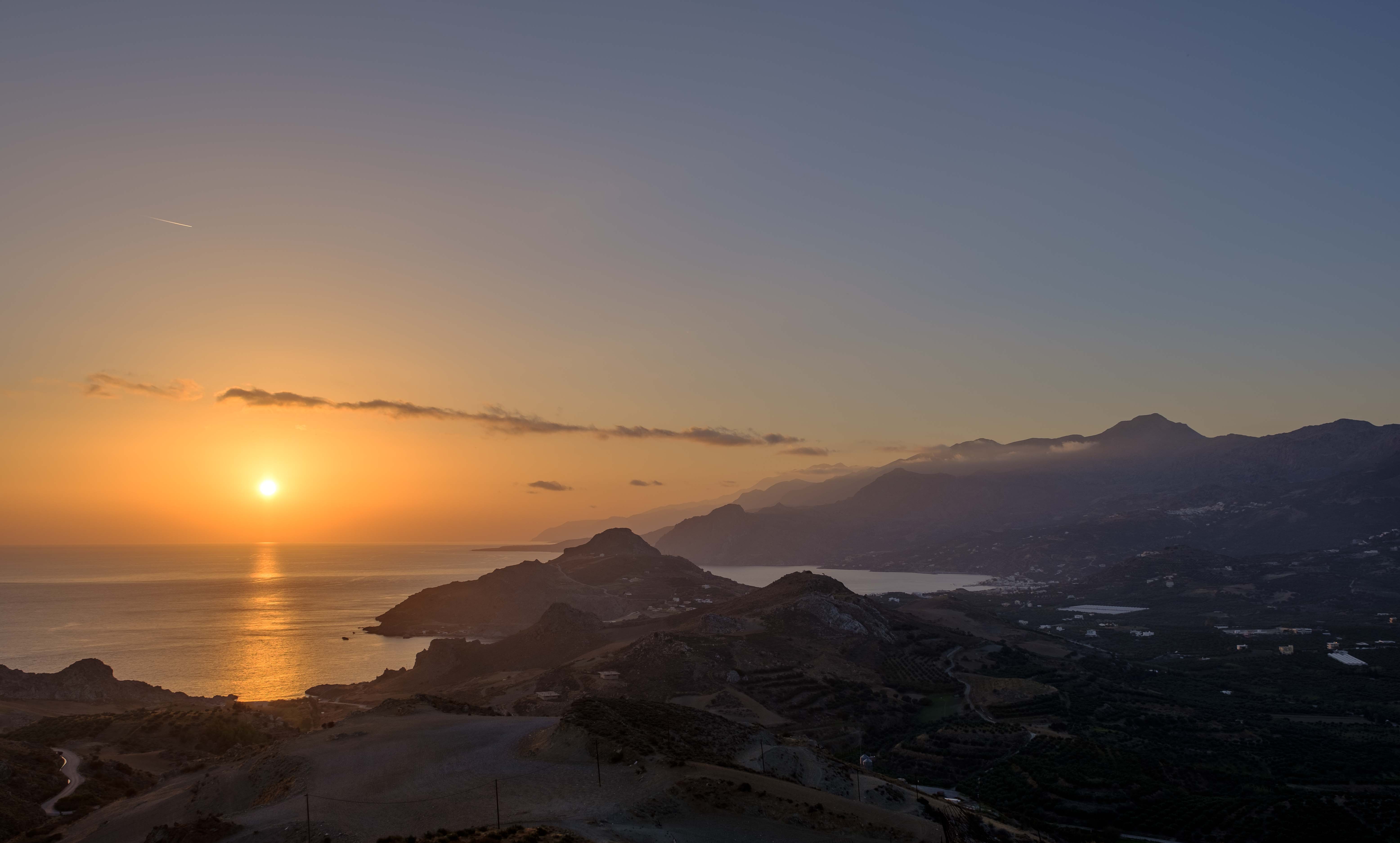“The rain has stopped, the clouds have broken; the vault of blue spreads out like a fan, the blue decomposing into that ultimate violet light which makes everything Greek seem holy, natural and familiar. in Greece one has the desire to bathe in the sky. You want to rid yourself of your clothes, take a running leap and vault into the blue. You want to float in the air like an angel or lie in the grass rigid and enjoy the cataleptic trance. Stone and sky they marry here…”
Henry Miller

To the Greeks, Crete seems the most authentically Greek of all the islands: it has all you could want, with cosmopolitan cities as well as unspoiled hidden villages, dramatic gorges and mountains high enough to be snow-tipped even into early summer as well as the obvious beaches and crystalline seas which are among top notch not only for the Mediterranean standard. The island is divided into four prefectures: west to east are Chania, Rethymno, Heraklion and Agios Nikolaos with their relative groups of mountains.

Rethymno is one of Crete’s most delightful town; its Venetian and ottoman quarter is centered around its beautiful Old harbour. The town itself is a pleasant mix of architecture with fortress and minarets, adding an exotic flourish. The pedestrianized area around the venetian (Old) harbour is where you can wander for busy tavernas, chic boutique hotels, but there’s also plenty to look out as you stroll.

The Venetian fortress, built on a rocky spur above the historic center, between 1573 and 1580, is the landmark of the city; inside the battlements, there’s a mosque converted by the Turks, from a Venetian cathedral, with lovely architecture as well as nice views of the city and the sea.



The coast south of Rethymno is centered on the twin resorts of Agia Galini and Plakias with dozens of pleasant beaches in between, such as Triopetra, Preveli and, our favorite, Shinaria, just few km east of Plakias. Approaching Plakias from the main Rethymno-Agia Galini road, you can choose among a couple of spectacular gorges, the very narrow Kotsifou and the even more impressive Kourtaliotiko, albeit on a lesser scale then the grander Samaria (which I’ll cover on the next episode). Plakias itself is a small resort with a pleasant feeling and a really nice and broad beach as well as some secluded coves to the east such as Damnoni and really delightful Shinaria.


The village of Myrthios, hanging high above Plakias, has wonderful views over the bay and makes for a quieter and more bucolic alternative than staying beachside. The Amari valley, at the foot of the Psiloritis range, is an area of unspoilt villages, Byzantine churches, olive groves and orchards. The isolated hamlets subsist on the olive and agricolture, its way of life barely altered by the progress of the last twenty years or more. The namesake villages of Amari is one of the prettiest with some venetian buildings, Byzantine churches and a 19th-century bell tower. On the foothills, north of Psiloritis, lies the awesome monastery of Moni Arkadi, a shrine to Cretan independence in the struggle towards freedom from Turkish occupation. The highly scenic location is one of the hallmark of Arkadi as well as its Venetian church with its striking Renaissance facade dating from 1587.



From the village of Kanevos, down to the Kotsifou gorge, there’s a road which veers west, running roughly above the south coast, with spectacular views, before finally reaching the idyllic beach and Venetian fortress, with a backdrop of dramatic mountains, at Frangokastello.

If you like wild beauty with stark mountains, gorges and bewitching beaches the south coast will, for sure, entice you.

